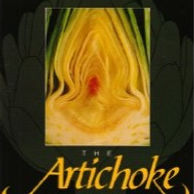

Artichokes
First of all when I started my research on artichokes, I was amazed at how many vegetables are perennials and also was surprised that no one has written on the subject, until I jumped into the mix. There are a tremendous number of vegetables that are perennial and I intend to do more study on the subject. I believe it would be nice if we could plant and harvest from a garden that had several perennial vegetables in it and not have to prepare for annuals once or twice a year.
With this in mind I am starting off with the Artichoke. Mediterranean weed was first discovered along the Appian Way as Roman soldiers harvested everything that wasn’t tied down. Initially the bloom bud was boiled so as to remove the many thorns and was consumed leaves and all. Eventually the bloom bud lost its spikes and the top of the bloom was tossed and the base eaten with a combination of olive oil and a lot of salt.
With the improvement in the harvest of the edible flower base it became a crop that now has journeyed around the world. It is considered a chef’s delight in restaurants, everywhere that food is served. Its popularity and hybridization has increased to the point where you can purchase buds that weigh over two pounds. Unfortunately these large fruit do not have the flavor of the smaller varieties such as Green Globe and Purple Italian Globe. Green Globe has been the standard in most American gardens, while the Purple Italian Globe is a European delight.
The structure of both plants is the same. They have grey thistle-like foliage and can be a dominate addition to the landscape. They grow from three to five feet tall and should be planted to give them a three to four foot area in which to grow. The plants are usually available in most nurseries in April in one gallon containers. You can start your own plants from seeds to plant in March indoors and later to be placed in the garden or flower bed in April. They are also sold as bare root roots that are divisions of older plants. From seed you can expect a good crop in September. From roots you can expect two crops a year.

To properly plant either from seed or divisions you need to prepare the ground with a good planting mix, plus a couple shovels full of manure. I prefer chicken manure. Composted horse or cow manure will do the job as well. You can always add more manure as the plants grow. As the plants mature they will start to form strong stems that will support the bud. The initial buds on the plant make the largest/harvestable fruit while the latter buds formed are quite a lot smaller. I like to leave an inch on the “choke” that is every-bit as edible as is the heart of the bloom. One year old plants from seed as I mentioned above will only give one crop the first year. In subsequent years these same plants will yield two harvests. Since they are a thistle their water requirements are less than most vegetable plants. I would suggest that perhaps once a week for mature plants and twice a week for first year plants would be sufficient.
There is another artichoke type plant that is used in Europe and ignored in America and that is Cardoon. Cardoon is a plant that has similar appearance as artichoke, but the stems of the plant are used much like celery. To properly grow cardoon for eating the stems must be blanched by tying up the stems with string to deny the tender stems from the sun. This tender perennial vegetable can reach eight feet and become a dominate feature in any perennial garden. It does bloom and in many cases the bloom is used by florists as the basic background for many floral arrangements.
Pests and diseases are rare with either of these plants. Earwigs love to enter the fruit and stems but can be trapped or baited to control them. Aphids and ants are the major pests and hosing off with water will control the problem. I use a hose end called the Bug Blaster to control these pests. Elimination of aphid will also eliminate the ants. After harvesting all of the chokes on the stem, the stem should be cut to within 2 inches of the ground. In the second year plant you will encourage another crop by fertilizing the plant with more organic fertilizer. In the fall as the plant starts to go dormant, it is wise to remove all dead and dying leaves and leave only the center growth intact. In very cold areas you need to mulch the plant with straw to protect the crown from frost damage.
There is a cook book “the Artichoke Cookbook” by Patricia Rain. Celestial Arts is the Publisher in Berkeley, California 94707
